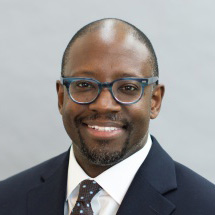 One of the unintended consequences of the church growth movement was the narrowing of an understanding of how Christianity contributes to the common good by reducing what Christians contribute to the local church. While the church remains vital for the moral formation of society, there are other aspects of human flourishing that require the development of other institutions as Andy Crouch recently explained at Christianity Today.
One of the unintended consequences of the church growth movement was the narrowing of an understanding of how Christianity contributes to the common good by reducing what Christians contribute to the local church. While the church remains vital for the moral formation of society, there are other aspects of human flourishing that require the development of other institutions as Andy Crouch recently explained at Christianity Today.
This reduction has been adopted in some platforms that currently promote church planting. This church planting emphasis, in some cases, has led to an atrophied historical understanding of the Christian tradition’s emphasis on seeking the peace of the city through multiple institutions like schools, hospitals, professional societies, etc. While many churches are being planted in America’s most “strategic” cities, there seems to be little interest in coupling church planting with the creating of Christian schools to provide alternative education opportunities for children trapped in substandard public schools.
Let’s take New York City as an example:
A recent New York Public Schools System report demonstrates that minority students are under-performing and leaving school unprepared to participate in the global market-place compared to white and Asian students. The achievement gap between Asian and White students compared to black and Latino students in New York is alarming. Here’s a report on this story from New York 1 news.
Last year [2012], the odds of a white or Asian student being proficient were 388 percent higher than the odds for a black or Hispanic student. This year, the odds of a white or Asian student being proficient were 521 percent higher than the odds for a black or Hispanic student.
NY1 took a high-performing school from one of the city’s wealthiest neighborhoods and compared it to a school with a high-needs population in the South Bronx, the city’s lowest-performing school district. At P.S. 41 in Greenwich Village, 85 percent of students are white or Asian, and just 8 percent are poor. At P.S. 1 in the South Bronx, 97 percent of students are black or Hispanic, and 96 percent are poor.
Last year, the odds of a student at the Greenwich Village school passing the math test were 1,220 percent higher than a student at the school in the South Bronx. This year, it’s even worse. A P.S. 41 student has 1,560 percent better odds of passing the math test than his or her peer at P.S. 1.
How does that translate into actual scores? 75 percent of the students at the Manhattan school passed the math test, compared to 15 percent of the students at the Bronx school.
Why are the Manhattan schools fairing so well? The answer can possibly be found in the story of gentrification coupled with a culture of motivated parents. There are many Christians who have moved into New York City and enrolled their children into public school. However, because of gentrification, these schools are essentially not much different than the public schools in class differentiated suburbs in cities like Atlanta or Nashville. What we are beginning to see in Manhattan public schools affected by gentrification is the suburbanization of city schools. Manhattan public schools are where the middle-class send their kids to school because they cannot afford New York’s elite private schools. The same cultural norms of the suburban parents of the 1980s have an ever-increasing presence in the gentrified areas of New York’s Manhattan borough.
Meanwhile, as the data indicates, for the areas outside of Manhattan where low-income minorities are increasingly segregating, the schools are imploding. So, where are the education alternatives for low-income families? How can Christians truly seek the peace of the city and not be committed to providing education alternatives for kids who are trapped in schools that are failing them?
Granted, there have been some churches over the years that understand this. For example, Tenth Presbyterian Church in Philadelphia was key in founding City Center Academy to provide more options for parents in the city who wanted a better education than the public schools were providing. Friendly Temple Missionary Baptist Church recently launched a daycare and pre-K school to serve the city of St. Louis. In Grand Rapids, MI, a small group of Christians moved to a low-income area after 6 years of seeing the academic, emotional, and spiritual needs of the children. They worked to organize a Christian school and named it “The Potter’s House.” Because children are made in the image and likeness of God, these young adults realized that these children “needed a safe place to grow and to flourish academically and spiritually.” Churches are needed to morally form families and schools, and quality Christian schools are needed to serve the city by providing good moral instruction and educational excellence to the city’s kids.
In the end, we can’t seek the peace of the city unless we address more and more of the aspects of human flourishing and an important one is education. What New York City is desperate for are Christians who are thinking “missionally” enough about making a contribution to the common good that they are willing to start schools like The Potter’s House all over the Bronx, Brooklyn, Queens and the remaining sections of Manhattan where kids in the city can flourish academically and spiritually. These neighborhoods need churches and schools.

